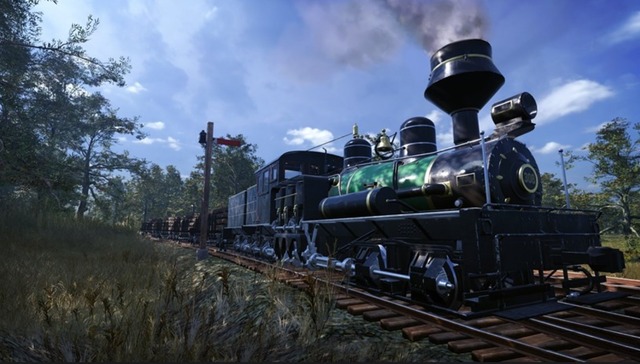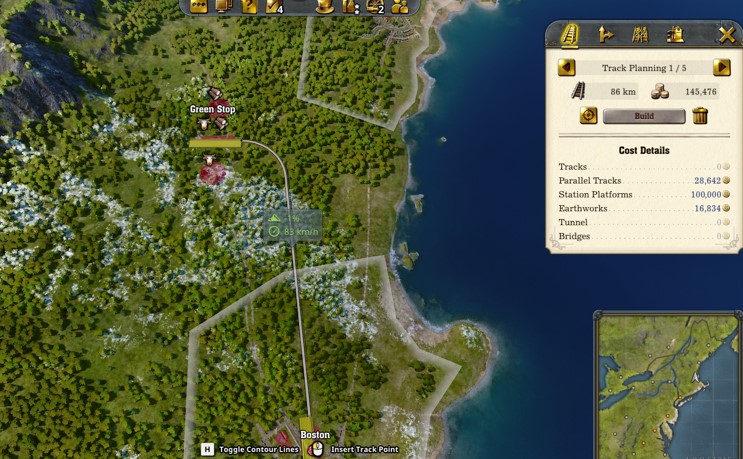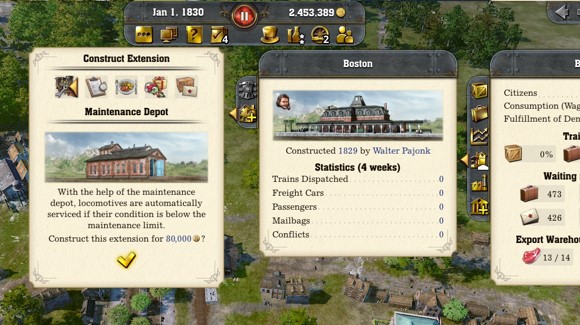Railway Empire 2 Connect Cities, Add Trains, & Construct Track

Railway Empire 2 is an immersive and strategic simulation game that puts players in the shoes of a railroad tycoon. With improved features and enhanced gameplay, it offers a captivating experience in building and managing a railway empire. Set in the golden age of railroads, players must connect cities, construct tracks, and establish a thriving transportation network. From designing efficient routes to optimizing resources and managing train schedules, every decision made will shape the success of their empire. With detailed historical accuracy, stunning visuals, and a deep simulation system, Railway Empire 2 provides an engaging and challenging journey into the world of railroad management.
Railway Empire 2 How To Connect Cities

In order to establish connections between cities in Railway Empire 2, you must first build a train station, even if one does not exist. To construct a train station, click on the house icon with a “+” sign located in the top right corner. From there, select the train station option and hover over the desired city. A pop-up menu will appear, displaying the number of available tracks.
Once the station is constructed, the next step is to connect it with tracks. On the top right corner, you will find the track construction icon. Click on it and select a track starting from one of the stations. Drag your cursor to determine the placement of the tracks. When doing so, pay attention to the incline percentage. If the incline exceeds 10%, it will not be possible to lay tracks for the locomotive to operate. It is crucial to find the optimal path with the least incline, maximum speed, and minimal cost by strategically placing track points.
Railway Empire 2: Adding Trains or Locomotives
After completing the track construction, select the “new rail line” icon on the top right corner of the screen. A green circle will mark all cities with stations that are connected by tracks. Choose the initial city from where you want the locomotive to start, and then select the destination city. On the top left side of the screen, you will find the names of both cities, along with the goods they import and export. Finally, select the locomotive and click on “confirm” to initiate the train’s journey.
Railway Empire 2: Building Tracks Cost-Effectively
During the process of laying tracks, you will notice various colors on the track line. A blue line indicates the need for a bridge to construct the track, while a pink line suggests the construction of a tunnel to connect the cities. To save gold, it is advisable to minimize the construction of bridges and tunnels. As you place track markers, cost details will appear on the right side of the screen. Connecting different platforms incurs a certain cost as the station needs to be upgraded. If you connect the first platform of one city with the first platform of another city, then you won’t have to incur the station platform cost. Opting for simple earthwork will result in lower expenses, so strive to find the most cost-effective path by carefully placing track points.
Maintaining Trains and Increasing Locomotive Condition

To repair the condition of a train, it is necessary to construct a maintenance depot. This can be done by selecting a train station in any city and then choosing the “construct extension” option. Within this menu, you will find the option to build a maintenance depot. It is important to note that constructing a depot requires 80,000 gold. Once the train’s condition drops below 60%, it will automatically be repaired at the station.
Maintenance posts can be constructed to reduce the deteriorating condition of the locomotive. In bad conditions, the locomotive will break down easily causing traffic and slowing down other trains. There are two types of locomotive breakdown, small breakdown, and maintenance required. Both breakdowns are repaired automatically but the small breakdown will take less time while maintenance will take a long time. So make sure to place maintenance posts and supply towers along the track lines.